3.1 Budget highlights in the North-West: The Hills Shire
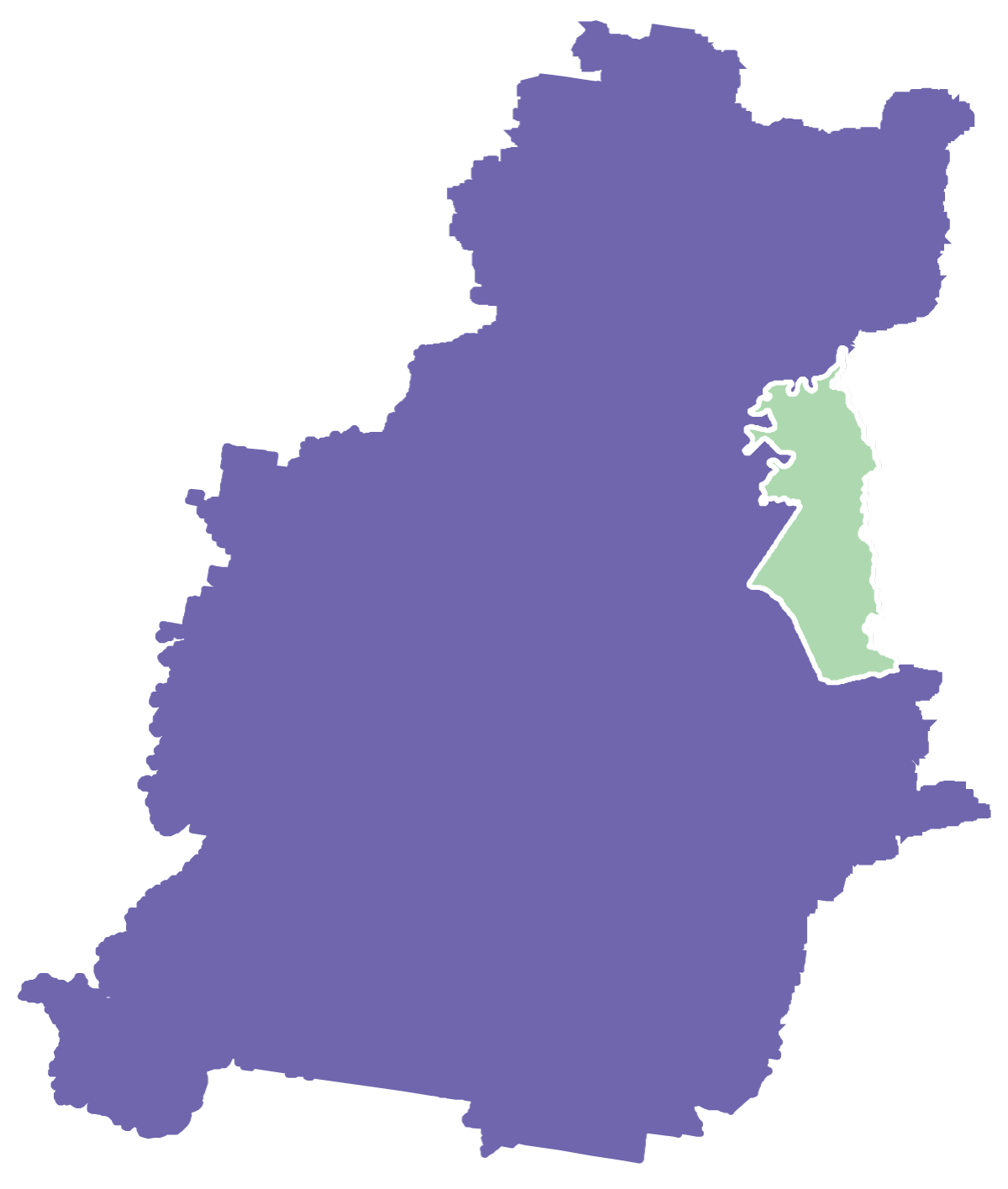
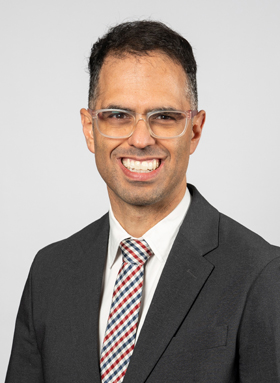
The Hon. Daniel Mookhey MLC
NSW Treasurer
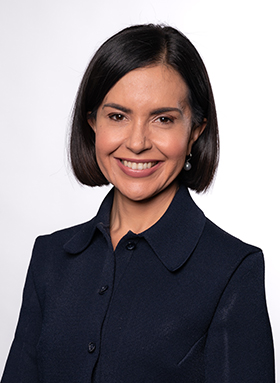
The Hon. Prue Car MLC
Deputy Premier of New South Wales
Minister for Education and Early Learning
Minister for Western Sydney
Over the past four decades, we have witnessed significant transformation in Western Sydney, the expansive and diverse region in which we both grew up.
We know that new and established communities need infrastructure and services to properly connect and support families, jobs and recreation in the area.
For too long, investment in this vital community infrastructure has not kept pace with the continued growth in the region.
As a government, we are delivering for fast-growing areas and Western Sydney’s established communities.
Our new infrastructure investment to build better communities in Western Sydney includes:
This Budget provides more than $7.2 billion for schools and hospitals across Western Sydney. Additionally, we are pushing ahead with our 100 public preschools commitment, with half set to be rolled out in Western Sydney.
We are proud of our Government’s investments in Western Sydney to support new and established communities, and will continue to ensure Western Sydney gets its fair share.
Western Sydney is the fastest-growing and most diverse region in the State.
Around 2.73 million people and 472,210 households with children live across the 13 Local Government Areas of Western Sydney, representing a third of the NSW population.
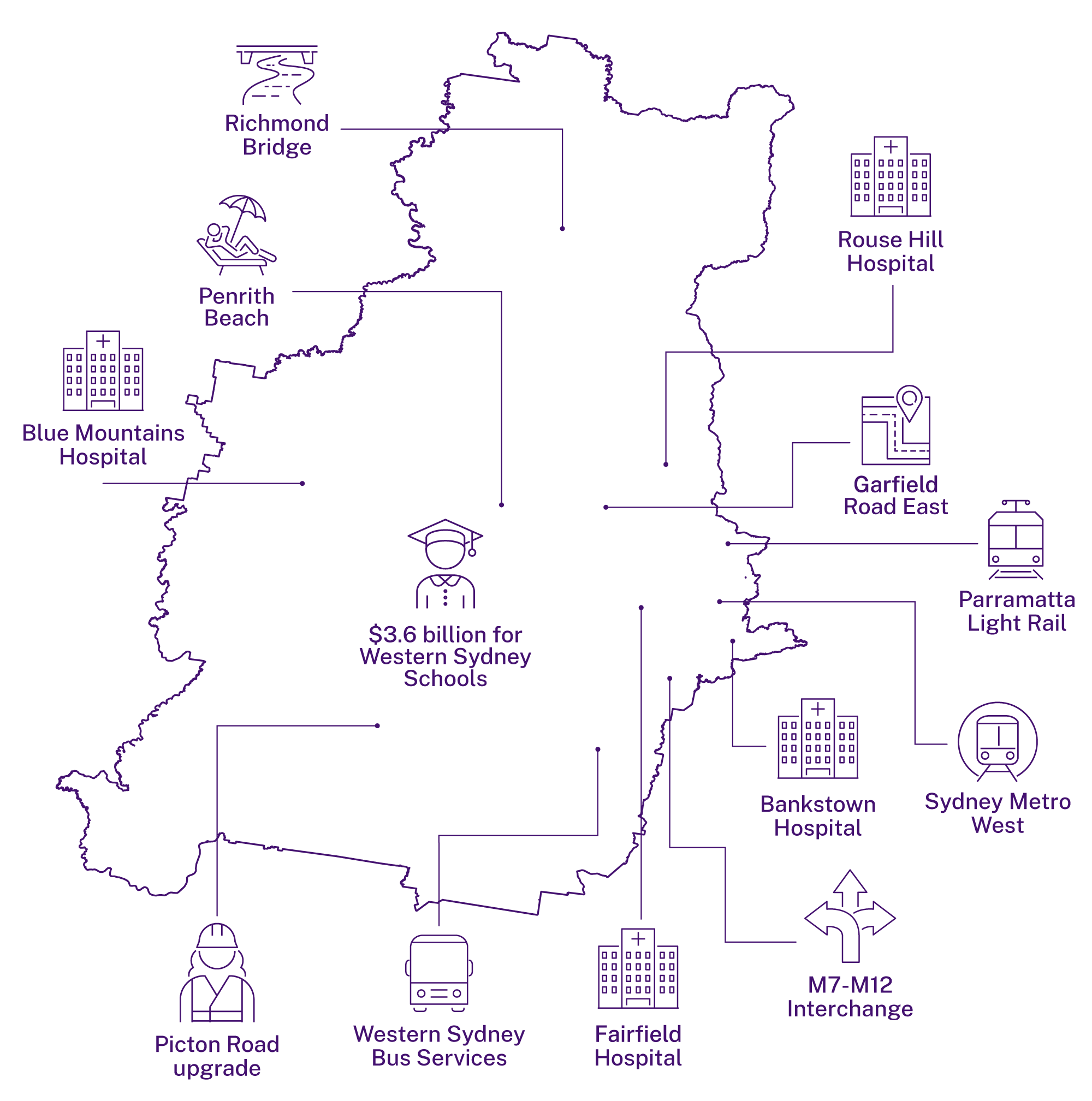
Western Sydney is the engine room of the NSW economy. Western Sydney businesses account for approximately 29 per cent of all NSW businesses, and contributed about one fifth of NSW’s gross state product in 2022-23. Western Sydney accounts for around a third of the State’s workforce, and more than 30 per cent of NSW’s public sector works in Western Sydney.
Western Sydney households are facing significant pressures, including cost of living, housing affordability and access to essential services. For decades, the region has borne the brunt of the State’s housing growth, without the adequate infrastructure needed to keep up with a growing population. For too long, investment in Western Sydney roads, schools, hospitals and public transport has not kept pace with this growth and communities have suffered.
This is why the NSW Government is committed to building better communities, building the infrastructure and delivering the essential services long promised but never delivered. Our work is already well underway, as we deliver better hospitals, schools and roads in the region.
Western Sydney residents
households with children
of total NSW businesses are in Western Sydney
of households speak a language other than English at home
Addressing the distribution of new homes across Western Sydney will help the delivery of new supply and reduce the high cost of housing for its growing population.
The NSW Government has announced new five-year local government housing targets that rebalance housing growth from Western Sydney towards the east and north of Sydney.
These fairer targets will enable more housing to be built around established infrastructure, in places that are connected to work and transport, and in communities that already have schools and hospitals.
To support the growth of housing in Western Sydney and to ensure supporting infrastructure is in place to connect people and communities, this Budget invests:
This investment is complemented by the Housing and Productivity Contributions reforms, which will support the delivery of housing by funding infrastructure.
This Budget also includes additional investments to support housing supply and accessibility, including:
Connecting people to their workplace and to one another, safely and quickly, is a key priority of this Government. Our staged and sequenced infrastructure investment will build stronger and well-connected communities and boost key industries across Western Sydney.
The Aerotropolis is set to become a thriving economic centre, creating new jobs and opportunities for the people of Western Sydney. Located around the new Western Sydney International Airport, the Aerotropolis will focus on local manufacturing, technology, research, training and education, freight and logistics, agribusiness and mixed-use development. At its heart it will be Australia’s newest city – Bradfield City Centre.
After years of inaction and delay, the NSW Government is getting the Western Sydney Aerotropolis moving with genuine investment and a proper plan. In the past year the NSW Government released the Draft Masterplan for Bradfield City Centre and streamlined the governance and coordination of the Aerotropolis.
In the 2024-25 Budget, the NSW Government is getting the basics right by delivering the critical enabling infrastructure to ensure the new Airport and broader Aerotropolis is a success. This will help unlock billions of dollars of investment already in the pipeline at the Aerotropolis.
This initiative represents a significant investment in the region’s economic and social development, promising substantial returns for NSW.
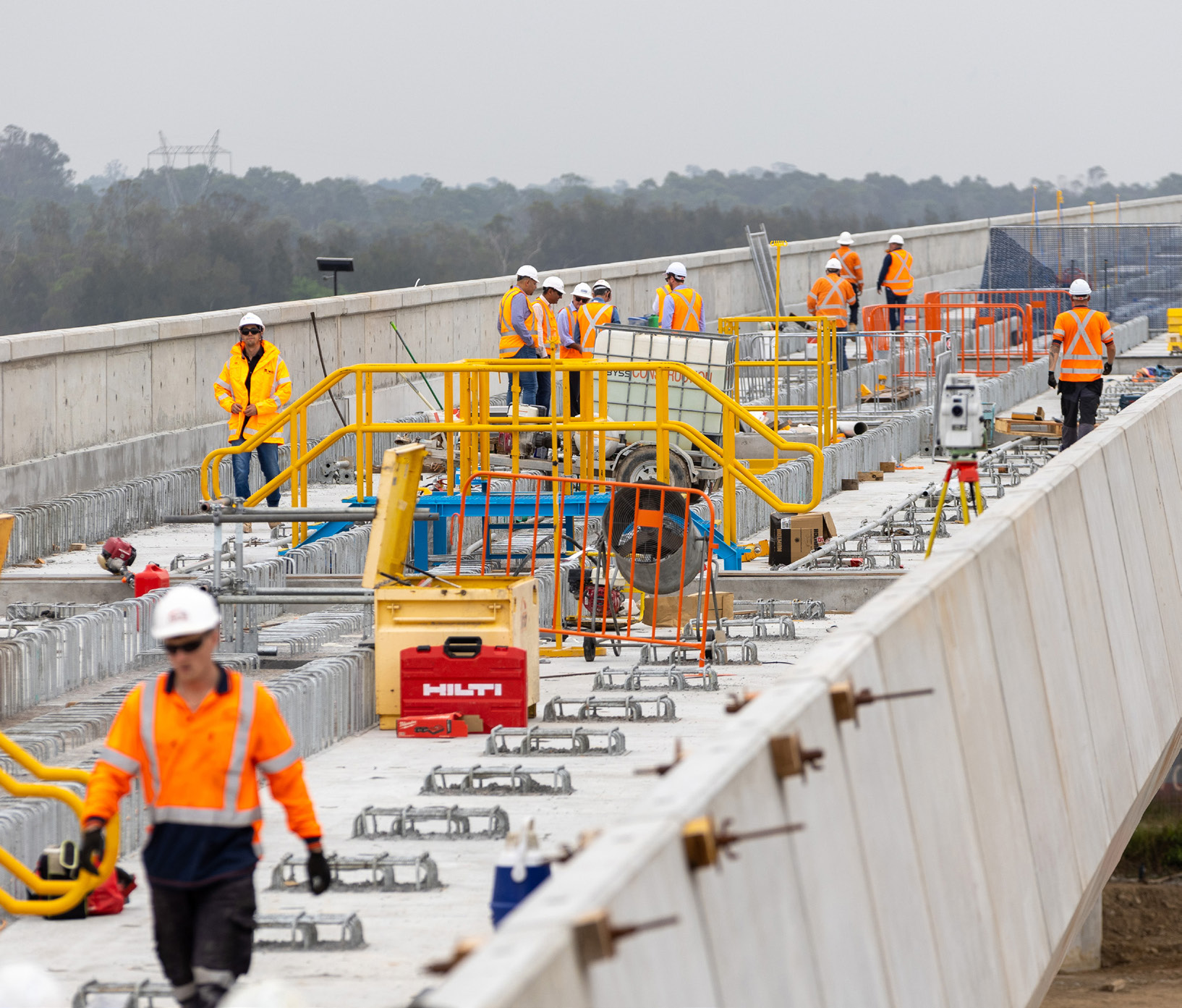 Sydney Metro construction between Orchard Hills and Luddenham
Sydney Metro construction between Orchard Hills and Luddenham
The Western Sydney International Airport is due to open in 2026.
The Budget allocates $1.0 billion in 2024-25, including for new roads connecting people and communities with the new Airport and Bradfield City Centre.
This will bring the total program for Western Sydney roads to $5.2 billion over four years.
This investment supports the delivery of the Western Sydney Aerotropolis, set to become a thriving economic centre.
The State is working in partnership with the Australian Government to deliver critical infrastructure for Western Sydney. This partnership will:
This Budget continues investment in public transport projects across Western Sydney, including:
Community infrastructure needs to keep pace with Western Sydney’s population growth, which is why the NSW Government is providing high quality schools to sit at the centre of our communities.
The 2024-25 Budget invests $3.6 billion for new and upgraded schools and continues investing in new public preschools across Western Sydney.
This includes a new primary school and a new high school in Box Hill to address the population boom in the new suburb and surrounds.
This package also includes new funding for further upgrades to:
The NSW Government is pushing ahead with its once-in-a-generation investment in public preschools.
Of the 100 public preschools to be delivered, half will be in Western Sydney. We are also continuing our $60.0 million investment for new and upgraded non-government preschools across NSW.
With design and planning work well underway, the map shows the locations of the new public preschools across Western Sydney.
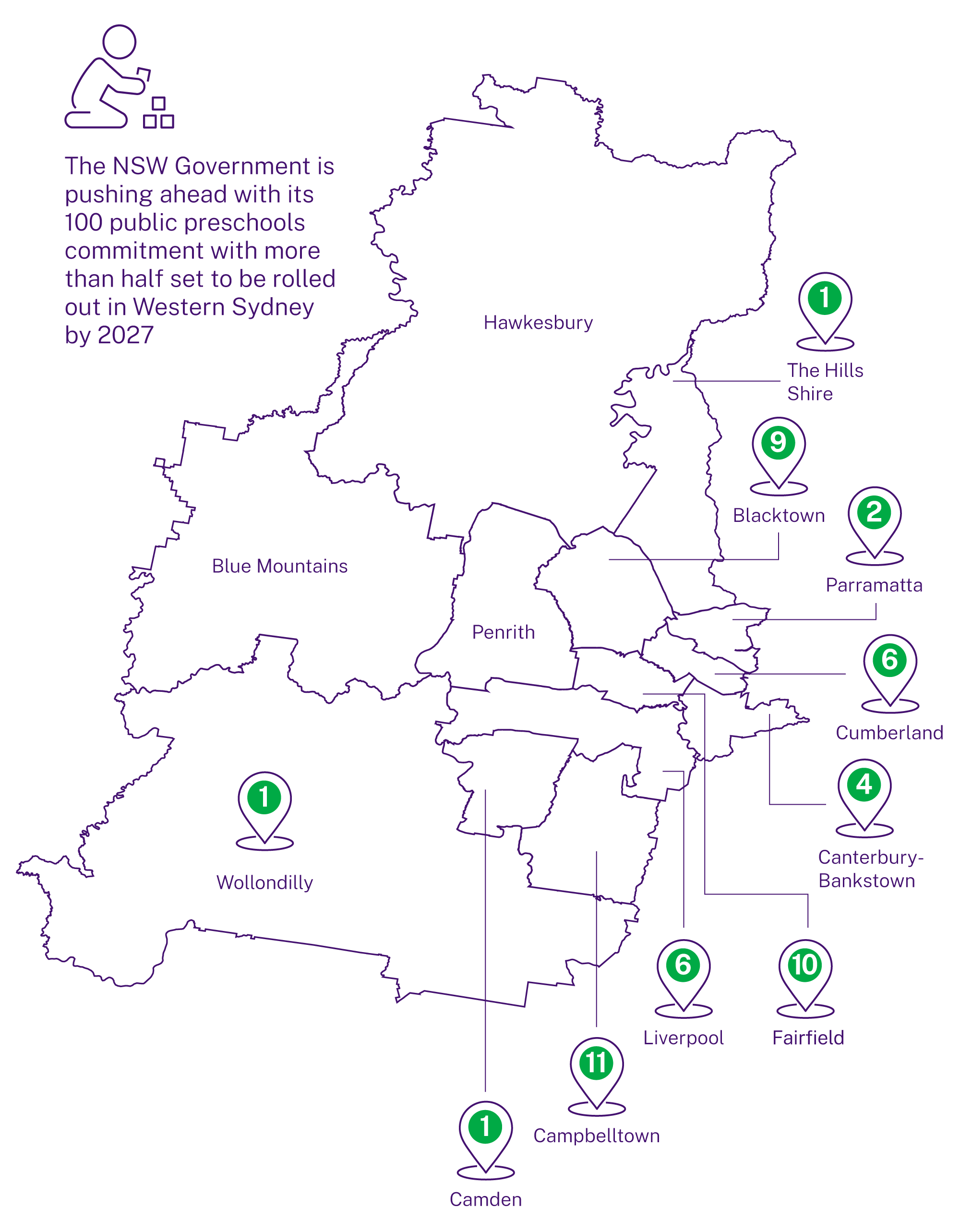
Investing in health care is crucial for the growing populations across Western Sydney. Comprehensive health and mental health services also underpin a thriving economy by maximising potential and quality of life, ensuring sustainable economic growth and future development.
The 2024-25 Budget includes new measures and expands on existing measures for the State’s health system, which will benefit residents of Western Sydney.
The 2024-25 Budget also maintains our investment in health infrastructure. The Building Better Hospitals Package commits an additional $151 million to deliver ongoing hospital redevelopments at Liverpool, Nepean and the Integrated Mental Health Complex at Westmead.
This brings the total investment in new and upgraded hospitals across Western Sydney to more than $3.6 billion over four years, and includes the continued delivery of:
1 The Mental Health Single Front Door $39 million is part of both the Emergency Department and Mental Health total.
This Budget continues to rebuild public services by supporting essential workers, addressing critical staff vacancies, collaborating with the State’s workforce and delivering long-term wage growth.
The Government has already delivered professional rates of pay for paramedics in recognition of the move towards university qualification and increased registration requirements, plus expansion of the scope of paramedicine.
Building on the Government’s 4.5 per cent wage offer for 2023-24, the 2024-25 Budget provides for a 10.5 per cent wage increase over three years to benefit NSW public sector workers (including superannuation).
This Budget invests in other enhancements to essential services, including:
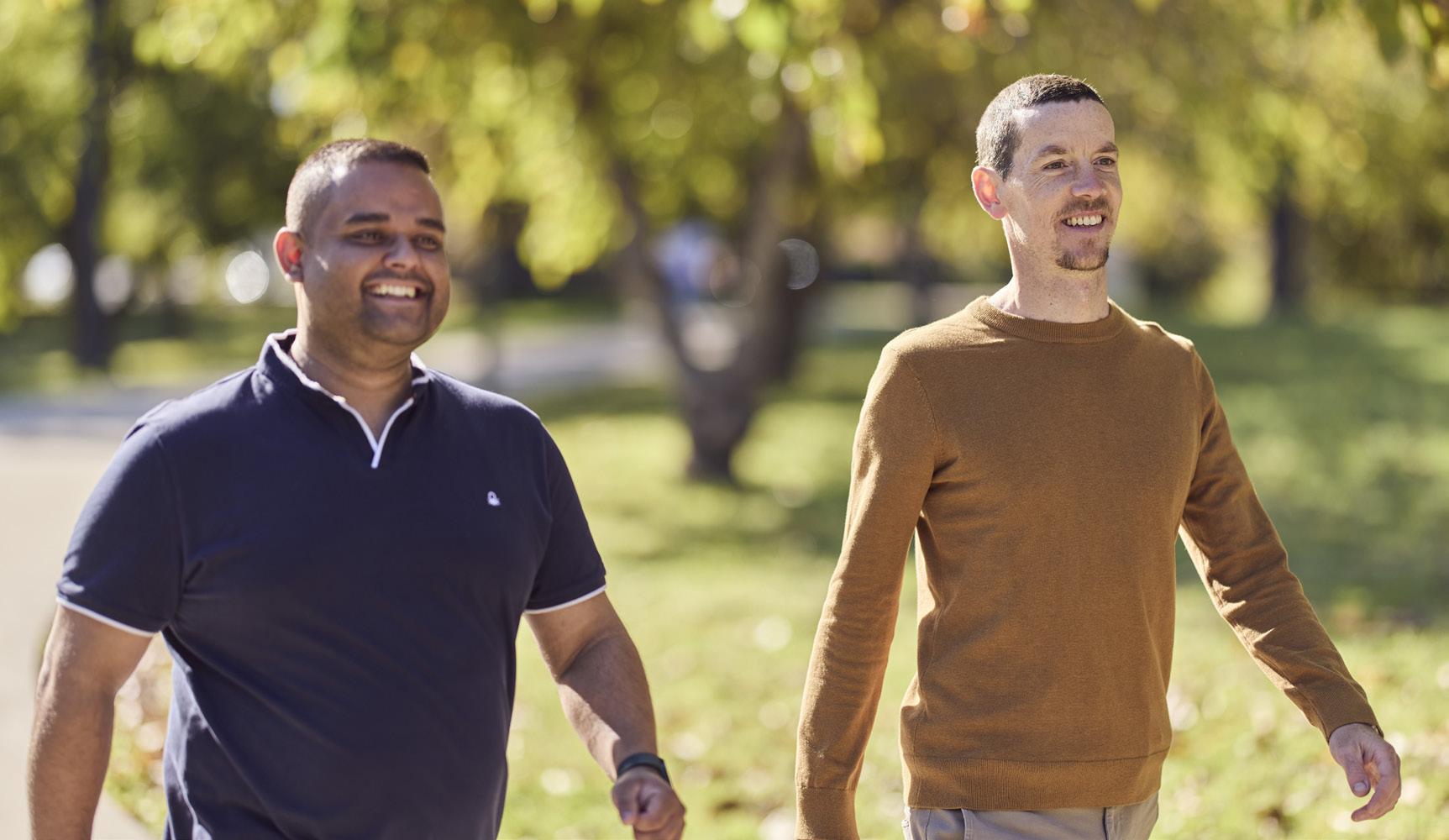
Emu Plains
Households across the State, including Western Sydney communities, are facing increasing cost of living pressures. To help those experiencing financial hardship, the NSW Government is continuing to deliver responsible relief to households through measures such as energy rebates, toll relief and support for health care costs.
In 2024-25, the NSW Government will provide around $8.7 billion to households to assist with growing cost of living pressures, benefitting residents of Western Sydney. This includes:
Since 1 July 2023, more than 11,600 Western Sydney households have benefitted from an exemption or concession on their first home. Under the First Home Buyer Assistance, first home buyers receive an exemption on their stamp duty when purchasing a home for up to $800,000 or a concession on their stamp duty when purchasing a home valued between $800,000 and $1.0 million.
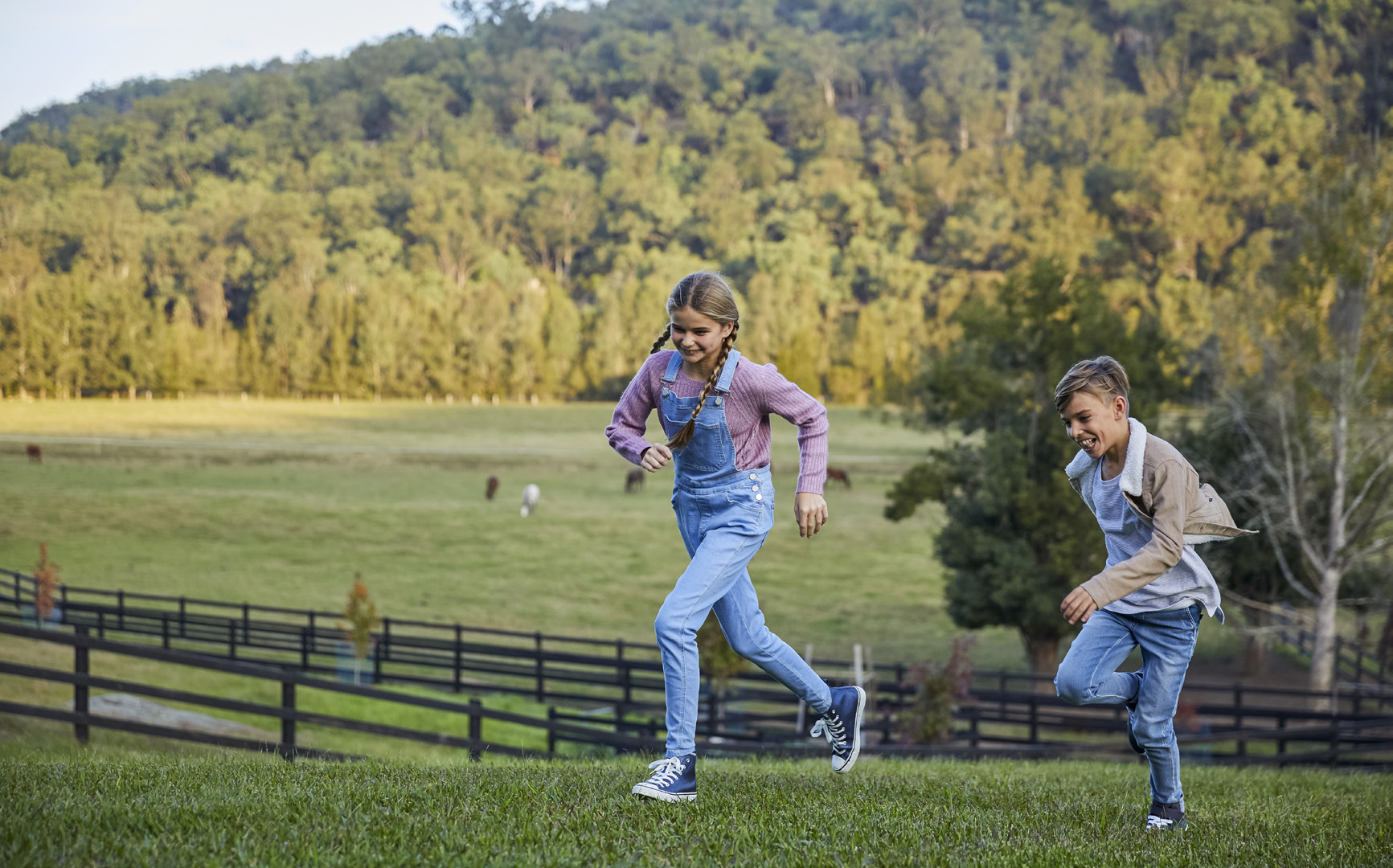
Lower MacDonald
Western Sydney communities and businesses are particularly vulnerable to the impacts of natural disasters.
The Hawkesbury-Nepean Valley has the highest flood exposure in NSW due to its unique landscape and large existing population.
The 2024-25 Budget includes $94.7 million to the NSW State Emergency Service for critical resources to effectively respond to future flood and natural disasters.
This includes enhancements to flood rescue training and capability, and improvements in flood rescue coordination, operational capability, public information and community engagement.
The NSW Government continues to provide support to those communities recovering and rebuilding from past events, as well as planning and preparing to limit the impact of future natural disasters.
Image credits
Department of Climate Change, Energy, the Environment and Water / Shayni Notelovitz, Destination NSW, NSW Department of Planning and Environment / Sandra Pires, State of New South Wales (Transport for NSW), Renee Nowytarger.